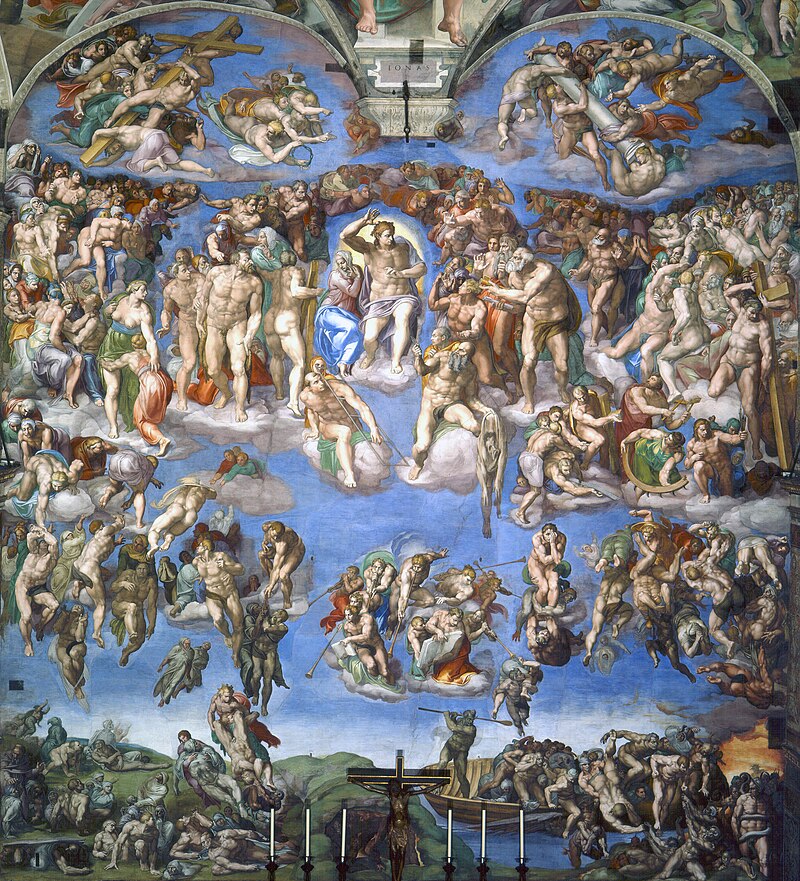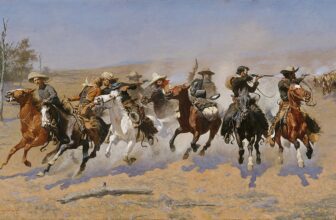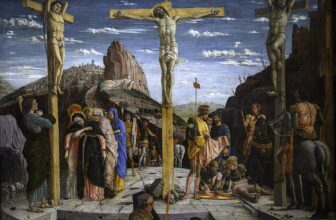
Why is The Last Judgement so famous?
The Last Judgement, painted by Michelangelo between 1536 and 1541, is one of the most celebrated and analyzed works of art in Western history. Located on the altar wall of the Sistine Chapel in Vatican City, this monumental fresco has achieved global fame not only for its artistic brilliance but also for its theological, cultural, and historical significance. This discussion will explore the reasons why The Last Judgement has remained so famous and relevant over the centuries, analyzing its artistic innovation, religious importance, cultural impact, and its enduring legacy.
Artistic Brilliance
Michelangelo’s The Last Judgement is often considered a masterpiece of High Renaissance and Mannerist art. The fresco’s sheer scale and complexity are awe-inspiring. Measuring approximately 44 feet by 40 feet, the work dominates the viewer’s field of vision, creating a sense of immersion. Michelangelo employed his unparalleled skills in anatomy and movement to depict over 300 figures in various dynamic poses, creating a composition that appears alive with motion and emotion.
One of the defining features of The Last Judgement is its dramatic use of chiaroscuro, the contrast between light and dark, to create depth and emphasize the emotional intensity of the scene. The figures are sculptural in quality, reflecting Michelangelo’s background as a sculptor. The artist’s mastery of human anatomy is evident in the musculature and posture of the figures, each of which expresses a unique psychological state, from despair and anguish to hope and redemption.
The central figure of Christ, depicted as a powerful and authoritative judge, is surrounded by a host of saints, martyrs, and angels. Michelangelo’s portrayal of Christ breaks from traditional depictions, emphasizing his divine power and human vulnerability. Mary, situated next to Christ, exhibits a mix of humility and grace, while the swirling masses of saved and damned souls radiate chaos and order in equal measure. This innovative approach to composition and emotion has solidified The Last Judgement as a pinnacle of artistic achievement.
Religious Significance
The Last Judgement is deeply rooted in Christian theology, depicting the final day of reckoning as described in the Bible. The fresco serves as a visual representation of the eschatological themes found in the Gospel of Matthew, Revelation, and other scriptural texts. For devout Christians, the work is a stark reminder of the inevitability of divine judgment and the eternal consequences of one’s earthly actions.
Michelangelo’s fresco was commissioned by Pope Clement VII and later completed under Pope Paul III. Its location in the Sistine Chapel, the site of papal conclaves, further underscores its religious importance. The work’s message aligns with the Catholic Church’s efforts during the Counter-Reformation to reaffirm its authority and address issues of morality and salvation. By placing such a vivid depiction of the afterlife in a prominent ecclesiastical setting, the Church sought to inspire reverence, introspection, and spiritual renewal among viewers.
The theological richness of The Last Judgement is reflected in its intricate symbolism. The damned, portrayed in torment, serve as a cautionary tale, while the saved, ascending toward Christ, illustrate the rewards of faith and righteousness. The fresco’s inclusion of specific saints, such as Saint Bartholomew holding his flayed skin (believed to be a self-portrait of Michelangelo), adds layers of personal and doctrinal meaning. This combination of doctrinal teaching and artistic mastery has made The Last Judgement a cornerstone of religious art.
Cultural Impact
The fame of The Last Judgement extends beyond its religious and artistic contexts, influencing literature, music, film, and popular culture. During Michelangelo’s lifetime, the fresco sparked considerable controversy due to its unconventional style and the nudity of many of its figures. Critics accused Michelangelo of impropriety, leading to the eventual addition of drapery to cover certain figures in the decades following its completion. This censorship, known as the “Fig-Leaf Campaign,” highlights the ongoing tension between artistic freedom and societal norms, a debate that continues to resonate today.
The Last Judgement has also inspired countless artists and writers. The dramatic imagery and themes of salvation and damnation have been referenced in works ranging from Dante’s Divine Comedy to contemporary films exploring existential and moral questions. Its influence can be seen in the baroque and romantic art movements, which similarly sought to evoke strong emotional responses through dynamic compositions and dramatic contrasts.
Moreover, The Last Judgement serves as a cultural touchstone for discussions about the human condition, morality, and the nature of divinity. The fresco’s universal themes transcend religious boundaries, inviting viewers from diverse backgrounds to reflect on their own beliefs and values. Its enduring relevance is a testament to Michelangelo’s ability to capture the complexities of human existence in a single, monumental work of art.
Historical Context
The creation of The Last Judgement occurred during a tumultuous period in European history, marked by religious upheaval and political change. The Protestant Reformation, initiated by Martin Luther in 1517, had challenged the authority of the Catholic Church, leading to widespread debate over issues such as indulgences, the role of the clergy, and the interpretation of scripture. The Catholic Church’s response, known as the Counter-Reformation, sought to reassert its authority and address internal corruption.
In this context, The Last Judgement can be seen as both a spiritual and political statement. By commissioning such an ambitious and theologically rich work, the Catholic Church aimed to reinforce its position as the guardian of Christian doctrine and the arbiter of salvation. The fresco’s dramatic imagery and moral urgency align with the Counter-Reformation’s emphasis on piety, repentance, and the importance of good works.
Michelangelo himself was deeply influenced by the intellectual and spiritual currents of his time. A devout Catholic, he was also a follower of the reformist preacher Girolamo Savonarola, whose sermons on judgment and redemption left a lasting impression on the artist. These influences are evident in the somber and introspective tone of The Last Judgement, which reflects Michelangelo’s own preoccupations with mortality and salvation.
Technical Innovation
The Last Judgement represents a significant technical achievement in the history of fresco painting. Michelangelo’s use of foreshortening, perspective, and anatomical precision creates a sense of depth and realism that was groundbreaking for its time. The figures appear to project out of the wall, drawing viewers into the scene and creating an almost three-dimensional effect.
The artist’s ability to organize such a large and complex composition is equally remarkable. Despite the chaotic energy of the scene, the fresco maintains a sense of balance and coherence, with Christ as the central focal point. The arrangement of figures into distinct groups, the saved, the damned, the angels, and the saints, guides the viewer’s eye through the narrative, ensuring that the theological message is clearly conveyed.
Michelangelo’s innovative approach to fresco technique also contributed to the work’s longevity. By using high-quality pigments and carefully preparing the plaster surface, he ensured that the colors would remain vibrant for centuries. Subsequent restorations have revealed the original brilliance of the fresco, allowing modern audiences to appreciate its full impact.
Controversies and Criticism
The Last Judgement has not been without its detractors. As mentioned earlier, the nudity of the figures provoked outrage among some contemporaries, who deemed it inappropriate for a sacred space. This criticism led to the “Fig-Leaf Campaign,” during which draperies were added to conceal the nudity. These alterations sparked debates about artistic integrity and the role of censorship in religious art, issues that remain relevant in discussions about freedom of expression today.
Another source of controversy is Michelangelo’s inclusion of personal and political commentary within the fresco. For example, the figure of Minos, depicted with donkey ears and surrounded by serpents, is widely believed to be a caricature of Biagio da Cesena, a papal official who criticized the fresco. Such elements reflect Michelangelo’s defiance and individuality, but they have also been criticized as distracting from the work’s religious message.
Enduring Legacy
The Last Judgement’s enduring fame is due in large part to its ability to resonate with audiences across time and cultures. Its universal themes of judgment, redemption, and the human condition continue to inspire reflection and dialogue. The fresco’s technical brilliance and emotional power ensure its place as a cornerstone of art history, while its theological depth makes it a focal point for religious and philosophical inquiry.
In modern times, The Last Judgement has been the subject of extensive scholarship and interpretation. Art historians, theologians, and cultural critics have explored its symbolism, historical context, and artistic techniques, uncovering new insights and perspectives. The work’s restoration in the late 20th century, which revealed its original colors and details, renewed public interest and cemented its status as a masterpiece of Western art.
Moreover, The Last Judgement’s influence can be seen in contemporary discussions about the role of art in society. Its combination of aesthetic beauty and moral urgency challenges viewers to consider the intersection of art, faith, and human values. As such, it continues to inspire artists, writers, and thinkers, ensuring its relevance for future generations.
The Last Judgement is famous for a multitude of reasons, ranging from its artistic and technical achievements to its profound religious and cultural significance. Michelangelo’s masterpiece captures the complexity of the human experience, blending divine and earthly elements in a way that speaks to universal questions of morality, existence, and faith. Its location in the Sistine Chapel and its role in the history of the Catholic Church further enhance its importance, making it a symbol of both spiritual devotion and artistic innovation. As one of the most iconic works of art in history, The Last Judgement continues to captivate and inspire, solidifying its place as a timeless masterpiece.




